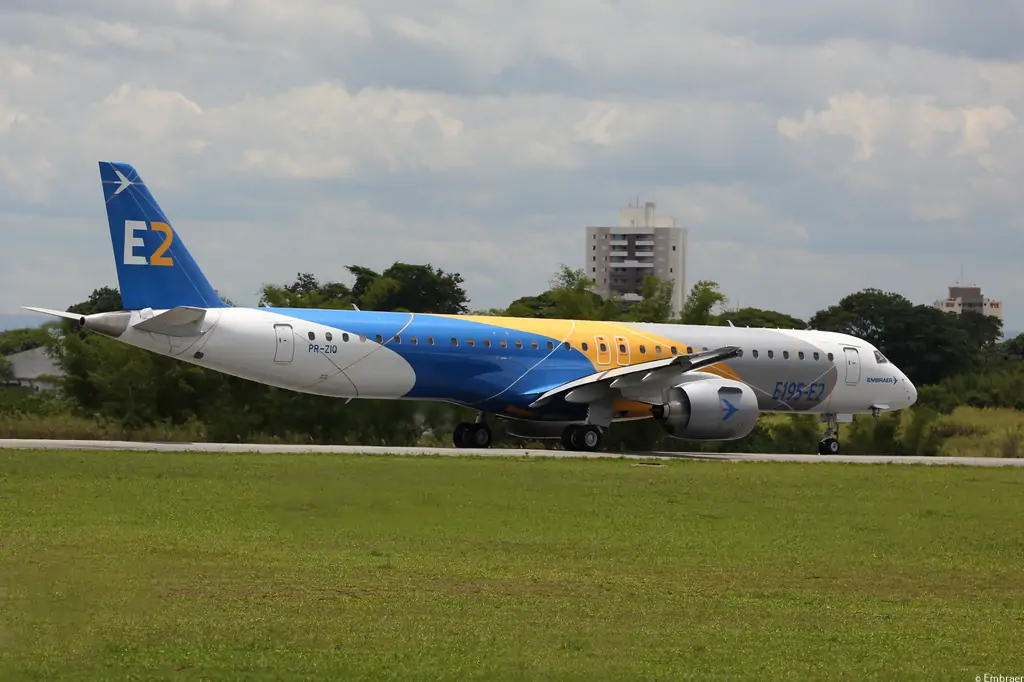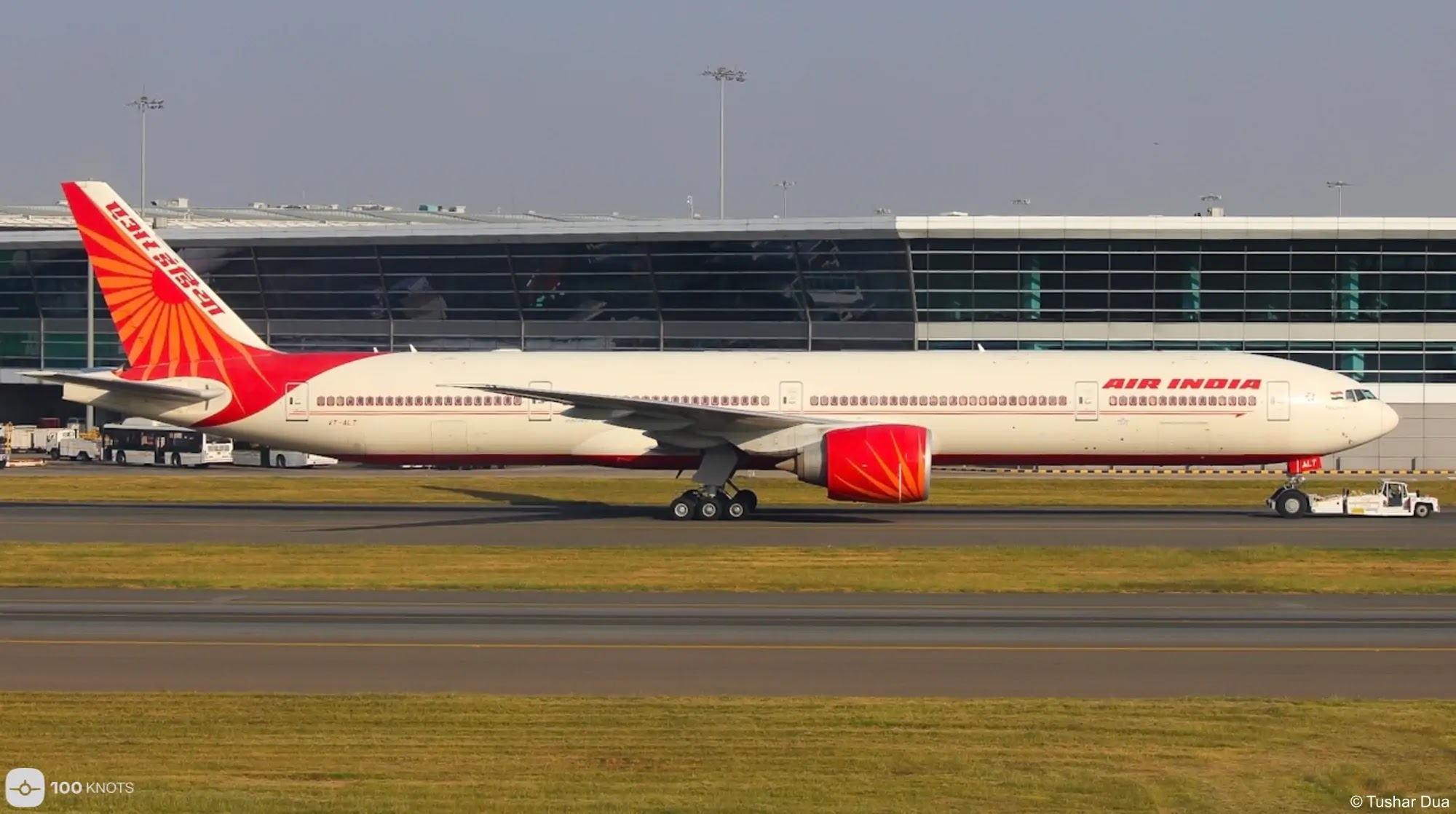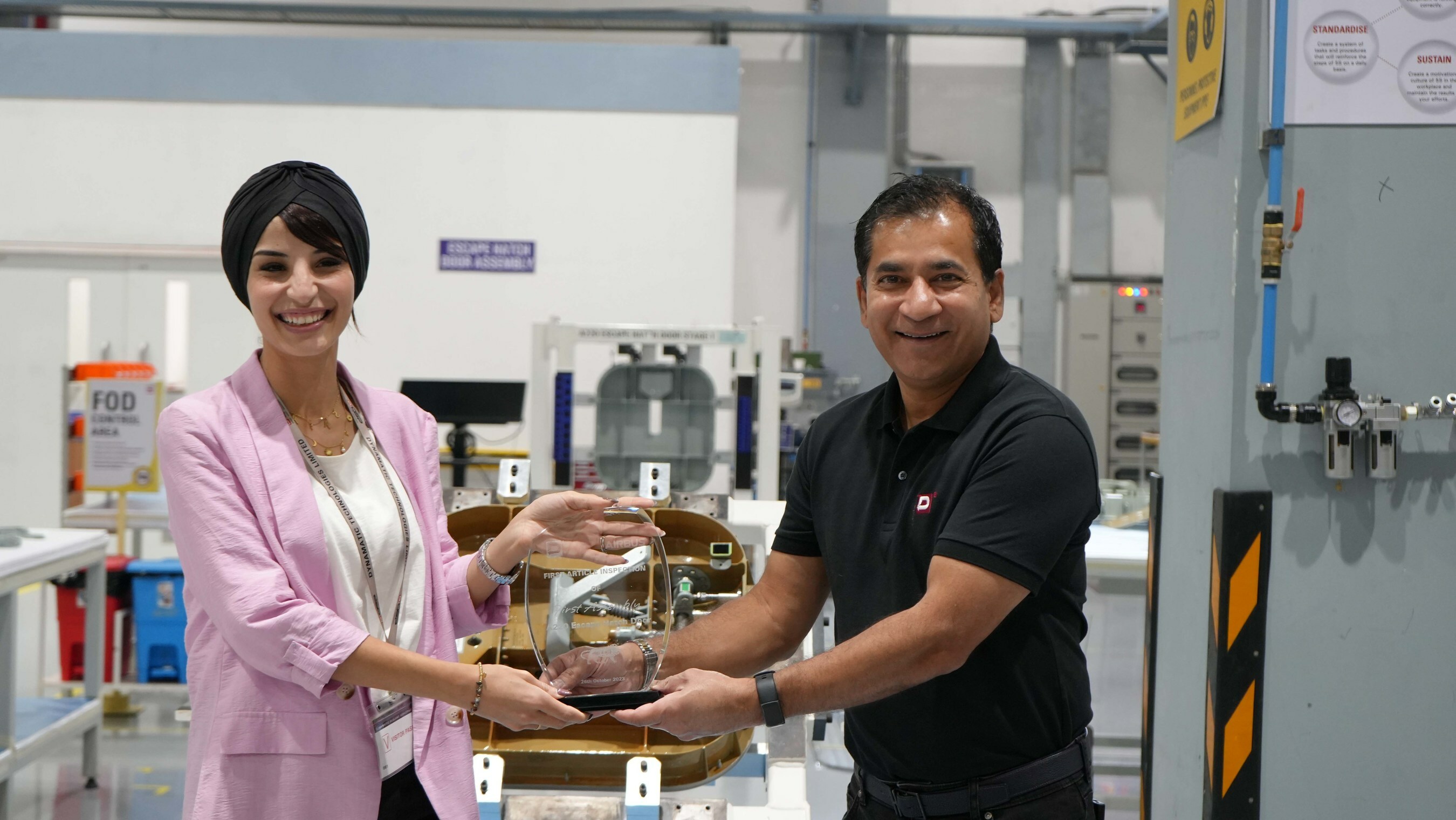India Exploring Joint Collaborations With Boeing, Blue Origin, Voyager Space for Space Partnerships
Radhika Bansal
30 Nov 2023

India’s space agency is exploring joint collaborations with Boeing Co., Jeff Bezos’s Blue Origin LLC and Voyager Space Holdings Inc., as an official visit by the head of NASA highlights the growing level of cooperation between the US and India in outer space. The potential partnerships could also involve Indian commercial entities, India’s Department of Space said in a statement on Wednesday, November 29.
NASA administrator Bill Nelson is visiting several locations in India this week, including Bengaluru-based facilities that are testing and integrating spacecraft for a joint US-Indian Earth-observing mission scheduled for launch in 2024. Nelson’s visit underscores NASA’s deepening space alliance with the Indian Space Research Organization, which this year notched several accomplishments including the landing of a spacecraft near the moon’s south pole in August.
The two space agencies are planning to send an Indian astronaut to the International Space Station next year. In June, Nelson joined a ceremony in Washington when India signed the Artemis Accords, a US-backed initiative with more than two dozen other countries to establish principles for space exploration.
ISRO and NASA have also formed a Joint Working Group (JWG) on Human spaceflight cooperation and are exploring cooperation in radiation impact studies, micrometeorite & orbital debris shield studies; and space health and medicine aspects. The 8th meeting of the India-US Joint Working Group on Civil Space Cooperation (CSJWG) was held in Washington DC in January 2023.
The Indian side informed that a concept paper on the Implementing Arrangement (IA) is under consideration between ISRO and NASA. After a few iterations, both sides arrived at a mutually agreed draft and the same was processed for intra-governmental approvals.
Space Companies Interested in Collaboration with India
Blue Origin is “very keen” on considering using an Indian rocket as a crew capsule to service its proposed space station Orbital Reef in low-Earth orbit, ISRO chairman S Somanath told the Times of India in June. Larsen & Toubro Ltd., an Indian manufacturer of engineering equipment, is in early discussions with Blue Origin to supply orbital launch capabilities, according to local media.
Denver-based Voyager in July announced a preliminary agreement with ISRO’s commercial arm, NewSpace India Ltd., to explore using Indian rockets to launch and deploy small satellites. Voyager in July also signed a memorandum of understanding with ISRO and the Indian national space promotion and authorization center regarding the use of Gaganyaan, the space agency’s crewed spacecraft now under development, to service a proposed space station, Starlab. Boeing is considering designing and manufacturing a space capsule simulator for India’s human spaceflight project but hasn’t signed a contract yet, according to local media.
India’s upcoming projects include its first launch of astronauts on a crewed mission, scheduled for 2025. To boost its lunar ambitions, the country plans to develop a next-generation launch vehicle and a new launchpad, to land people on the moon by 2040. ISRO’s to-do list also includes establishing a space station by 2035, launching a Venus orbiter and landing on Mars.
(With Inputs from Bloomberg)
Read next
Mobile phones have become an indispensable part of our daily lives, allowing us to communicate with anyone, anywhere. However, one notable exception to this ubiquitous connectivity is the prohibition of using mobile phones on commercial flights. The requirement to switch to 'Airplane Mode' is a familiar announcement before takeoff, but have you ever wondered why this restriction exists and whether your tiny smartphone could truly pose a threat to a giant airliner?
Regulations Behind the Ban: FCC and FAA Collaboration
The Federal Communications Commission (FCC) plays a pivotal role in enforcing the ban on cell phone use during flights. The primary concern is the potential Electromagnetic Interference (EMI) on an airplane's navigation, communication, and data reporting systems. While there's no direct evidence linking mobile phones to flight safety issues, the FCC prioritizes precaution to ensure passenger and aircraft safety.
The Federal Aviation Administration (FAA) acts in accordance with the FCC's rulings, overseeing the implementation and enforcement of these regulations. The collaborative efforts of these regulatory bodies aim to maintain the integrity of an aircraft's critical systems.
Reasons Beyond EMI: Passenger Comfort, Attention, and Noise Reduction
Beyond the potential EMI, several other reasons contribute to the ban on cell phone use during flights:
- Preventing Passenger Confrontations: The goal is to create a serene atmosphere for passengers, avoiding confrontations that could arise from prolonged loud phone conversations.
- Ensuring Passenger Attention: Flight attendants need passengers attentive during safety briefings and in case of emergencies, ensuring compliance with instructions.
- Noise Reduction: The constant influx of notifications and phone calls could disrupt the quiet atmosphere needed for passengers to rest during flights.
How Cell Phones Could Cause Interference with Aircraft Systems
Airplanes boast extensive electrical wiring within their fuselage, making them susceptible to Electromagnetic Interference. Cell phones transmit signals as radio waves, and an airplane's wiring can inadvertently act as antennas, intercepting these signals and potentially corrupting data, leading to false readings or interference with flight control inputs.
To mitigate these risks, modern airplanes utilize shielded data cables, designed to absorb and redirect external radio signals away from internal conductors. This shielding, combined with advancements in technology and the allocation of specific frequency bands, has significantly reduced the likelihood of interference.
Ground Network Interference: A Concern for Cell Phone Use in Flight
While in-flight cell phone usage is not only about EMI, the ground network interference poses a significant challenge. The frequent switching of signals between cell towers as the aircraft moves creates network overload potential. Lifting the ban could lead to thousands of users simultaneously pinging off multiple towers, requiring a costly network upgrade to handle the increased load.
Airplane Mode: A Necessary Precaution
Activating 'Airplane Mode' isolates a device's signal transmitting and receiving capabilities while allowing the use of Bluetooth and Wi-Fi. This precautionary measure ensures that the device no longer functions as a radio transmitter and receiver, addressing potential interference issues.
In-flight Cell Services: Picocells and Voice Over Wi-Fi
In recent years, technological advancements have paved the way for in-flight cell services on certain private and business jets. Picocells, miniature cell antennas on airplanes, route voice calls and messages through a satellite network, avoiding interference with ground-based networks. This technology, known as Voice Over Wi-Fi, is available on premium private aircraft but comes at a significant cost.
Why Private Jets Can and Commercial Flights Cannot?
Private jets are subject to different regulations than commercial flights. The limited number of passengers on private jets allows for more controlled use of communication equipment, certified not to interfere with aircraft systems. Voice Over Wi-Fi capabilities on private jets have facilitated messaging during flight, providing a glimpse into the potential future of in-flight communication.
Conclusion: Balancing Connectivity and Safety
While reports from various studies suggest that modern technology has mitigated the risks associated with in-flight cell phone use, regulatory bodies like the FCC and FAA remain cautious. Safety concerns, potential interference, and the need for passenger comfort continue to drive the decision to uphold the ban on cell phones during flights.
As technology evolves, the balance between connectivity and safety will likely be revisited, as seen with Europe's adoption of new rules. Until then, adhering to the 'Airplane Mode' requirement remains a small sacrifice for the assurance of a safe and comfortable flight experience.
With Inputs from Pilot Teacher, How Stuff Works
Read next
Air India CEO Advocates for Strategic Management of Foreign Carrier Access
Abhishek Nayar
30 Nov 2023

In a dynamic global aviation landscape, the CEO of Air India, Campbell Wilson, has urged the Indian government to adopt a cautious approach in granting additional capacity rights to foreign carriers. Wilson contends that nurturing the growth of local airlines is paramount before embracing widespread traffic liberalization. This stance reflects a broader strategy to fortify the domestic aviation sector, fostering both economic development and international connectivity.
Balancing Act: Local Growth vs. Global Access
Wilson underscores the need for a delicate balance between allowing the aviation market to expand and providing a conducive environment for local carriers to flourish. The CEO emphasizes that enabling local airlines to scale up and become competitive entities is fundamental for the overall development of the Indian aviation industry and the broader economy.
Foreign Threats and Gulf Airlines' Dominance
Amid the calls for cautious expansion, Wilson specifically highlights the challenges posed by Gulf airlines, citing their significant share of sixth freedom traffic. The competitive landscape in India sees Emirates and Etihad Airways securing notable positions in the top ten carriers by seat capacity. Wilson points out that a substantial portion of the traffic carried by these Gulf carriers is routed beyond Dubai, emphasizing the potential for Indian airlines to serve these destinations.
Current Aviation Landscape
As of now, India boasts a vibrant aviation sector, with 85 airlines offering scheduled passenger flights. The top ten carriers, including IndiGo, Air India, and Air India Express, collectively contribute over 60% of the total weekly seat capacity. Notably, Air India is undergoing a substantial restructuring and fleet upgrade, with 497 aircraft on order. The imminent merger with Vistara, a joint venture with Singapore Airlines, is set to further solidify Air India's market presence.
Foreign Carriers' Quest for Access
Despite India being a lucrative market, foreign carriers, including Emirates, seek additional traffic rights. Emirates' request for a 50,000-seat increase in weekly capacity remains pending approval from the Indian government. The airline argues that such an expansion would add value to the Indian economy. However, Wilson's stance aligns with the government's cautious approach, emphasizing the priority of nurturing indigenous carriers.
Tata's Dominance and Future Prospects
Tata Sons-controlled airlines, including Air India and Vistara, dominate the Indian aviation market in terms of raw seat capacity. With a comprehensive restructuring plan and a fleet expansion on the horizon, Air India is poised for significant growth. The impending Vistara merger, expected in 2024, will further consolidate Tata's control over the aviation market.
Global Perspectives: Criticisms and Comparisons
Critics, including IATA Director General Willie Walsh, have characterized the Indian government's stance on foreign carrier access as reminiscent of an "old protectionist India." The ongoing debate underscores the delicate balance between safeguarding local interests and embracing global competition in an era of increasing interconnectedness.
Conclusion
As Air India charts its course for growth and resilience, the broader discourse on foreign carrier access reflects the complexities of balancing local development with global connectivity. Campbell Wilson's advocacy for a strategic and measured approach aligns with the broader vision of nurturing a robust and competitive Indian aviation sector that can thrive on both domestic and international fronts. The evolving landscape suggests that India's skies are poised for further transformation, with careful considerations being made to ensure sustainable growth and a globally competitive aviation industry.
With Inputs from ch-aviation
Read next
Embraer Secures $2.1 Billion Deal with Porter Airlines for 25 E195-E2 Aircraft
Abhishek Nayar
30 Nov 2023

Brazilian aircraft manufacturer Embraer announced on November 29, 2023, that Porter Airlines, based in Canada, has placed a firm order for an additional 25 E195-E2 aircraft. This deal, valued at $2.1 billion, comes as an extension of Porter's existing order for 50 jets, with 25 more purchasing rights still in play.
Strengthening Ties: Porter's Ongoing Partnership with Embraer
Porter Airlines, a regional carrier known for its focus on short-haul flights, has been a key partner for Embraer. With the firm order of 25 more E195-E2 aircraft, Porter continues to demonstrate confidence in Embraer's capabilities. The Brazilian planemaker has already delivered 24 units of the E195-E2 to Porter, with the airline incorporating them into its fleet earlier this year.
Financial Implications for Embraer
The $2.1 billion deal is a significant boost for Embraer, contributing to its financial stability and growth. The new order will be reflected in Embraer's backlog in the fourth quarter, further solidifying the company's position in the competitive aviation market. The importance of securing orders in an industry dominated by giants like Boeing and Airbus cannot be understated, and this deal underscores Embraer's continued efforts to carve out a niche for its passenger jets.
Embraer's Push into the U.S. Market
Embraer, currently the world's third-largest planemaker, has been actively working to break into the U.S. market. The strategy involves positioning its E195-E2 aircraft as a versatile "small narrow-body" option, suitable for regional and short-haul routes. The additional 25 orders from Porter Airlines serve as a testament to Embraer's commitment to expanding its presence in North America.
Porter CEO's Perspective: Extending Reach with Exciting New Destinations
Porter Airlines CEO, Michael Deluce, expressed enthusiasm about the additional aircraft, stating, "These additional 25 orders enable us to continue extending our reach throughout North America, with more exciting new destinations." This suggests that Porter sees the E195-E2 as a strategic asset in its expansion plans, providing the airline with the flexibility to explore and serve new markets.
The Global Aviation Landscape
In the dynamic landscape of global aviation, partnerships and orders play a crucial role in defining the success of aircraft manufacturers. Embraer's ability to secure substantial orders, particularly in the competitive North American market, showcases the company's resilience and competitiveness.
Looking Ahead: Potential Impact on the Industry
As Embraer adds 25 more E195-E2 aircraft to its production pipeline, the aviation industry will be watching closely to observe the impact on market dynamics. The move reinforces the viability of smaller, more fuel-efficient aircraft for regional travel, challenging the dominance of larger models in certain market segments.
Conclusion
In summary, the recent deal between Embraer and Porter Airlines marks a significant milestone for both companies. It highlights the strength of their partnership, Embraer's commitment to growth, and the evolving preferences in the aviation industry towards smaller, more agile aircraft for specific regional needs. The coming months will likely see further developments as these additional E195-E2 aircraft take flight and contribute to the evolving narrative of the global aviation market.
With Inputs from Reuters
Read next
India Must Restrict Flying Rights of Foreign Airlines to Help Indian Carriers Grow : Air India CEO
Radhika Bansal
29 Nov 2023

The CEO of Air India has called on the Indian government to continue carefully managing any additional capacity rights it allocates to foreign carriers, arguing that local airlines need the chance to grow first and become more effective competitors.
“I think the strategy is to contain traffic rights expansion so that local airlines have the opportunity to spin up and attain scale and become competitive," Campbell Wilson told the Hindustan Times, adding that traffic liberalisation can and should happen after this occurs.
"A balance that has to be struck, allowing the market to grow but also incubate your local market because that's fundamentally the most beneficial thing you can do for the economy," he said. "The idea is to support Indian aviation. I think it's the right thing to do for the development of Indian aviation, and also Indian business and international connectivity."
Foreign Carriers’ Traffic Rights in India
Multiple foreign operators are seeking new or additional traffic rights in and out of India. However, the Indian government has declined to grant them, being keen to shore up the local aviation sector first. Wilson specifically called out the threat posed by the Gulf airlines, which carry large amounts of sixth freedom traffic.
The Indian government has received several requests seeking more bilateral air service agreements or foreign flying rights from major countries such as the UAE, Qatar, Singapore, Indonesia, Malaysia, and Turkey, though none have been entertained so far.
India has such agreements with 109 countries but the country has not revised bilateral arrangements with countries that are aviation hubs since 2014. The government is of the view that countries like the UAE have built their airports with passengers from India and at the cost of Indian airlines. While Air India under government control could not grow, the airline under the Tata Group has placed aircraft orders to increase its presence in international skies.
Mentioning Dubai, one of the beneficiaries of India’s liberal bilateral regime, Wilson said it is carrying 60-70% of the traffic from India to countries beyond Dubai, which Indian carriers would have carried. At the centre of the bilateral issue are passengers, who fly from India to a third country via a second country also known as sixth freedom traffic in aviation parlance. Wilson argued that these countries should not seek more rights for sixth freedom traffic.
Market Share of Airlines Flying in and Out of India
According to ch-aviation capacities data, 85 airlines offer scheduled passenger flights in and out of India, with the top ten carriers providing 62.15% of the total weekly seat capacity. IndiGo is in the top spot with a 16.56% market share, followed by Air India with an 11.88% share. Third is Air India subsidiary Air India Express with a 7.48% market share. Vistara, an Air India joint venture with Singapore Airlines and soon to be merged with Air India, is in sixth place with a 3.69% market share. Gulf carriers Emirates and Etihad Airways take the fourth and fifth spots, respectively. Rounding out the top ten are Singapore Airlines, SpiceJet, Qatar Airways, and Oman Air.
Wilson's comments come after the Tata Sons-controlled airline has embarked on a massive restructuring and fleet upgrade. It presently operates 131 aircraft but has 497 on order. Before the full complement of these aircraft arrives, Air India's market share will grow when it closes the Vistara merger, expected to occur in 2024. Adding the market shares held by Tata's low-cost carrier interests, the combined Tata-controlled airlines already dominate on routes to and from India, when measured on raw seat capacity numbers.
Nonetheless, Wilson highlighted carriers such as Emirates, pointing out that 60%-70% of the traffic Emirates carries in and out of India is to and from ports beyond Dubai. These people are flying "somewhere else that Indian carriers can carry people to."
Emirates wants to increase its weekly capacity in and out of India by 50,000 seats, a request the Indian government has not yet approved. Emirates President Tim Clark has argued that the additional capacity would add value to the Indian economy. IATA Director General Willie Walsh thinks the Indian government's position on foreign carrier access is reminiscent of an “old protectionist India.”
(With Inputs from Hindustan Times and ch-aviation)
Read next
Airbus Atlantic Receives First A220 Escape Hatch Door from India Based Dynamatic Technologies
Radhika Bansal
29 Nov 2023

Bengaluru-based Dynamatic Technologies Limited on November 27 announced that it has completed the initial delivery of the Airbus A220 Escape Hatch Door to Airbus Atlantic. This essential component is integrated into the A220 Nose Fuselage of Airbus Atlantic, produced in Mirabel, Canada.
The latest milestone signifies a significant advancement in the development and production of this crucial element for the Airbus A220 aircraft, the company noted in its statement. Dynamatic has joined forces with Airbus Atlantic to ensure that the escape hatch door not only meets but exceeds the highest quality standards and adheres to the stringent safety requirements of the aviation industry.
The official handover ceremony took place at the Dynamatic facility in Bengaluru in the presence of senior executives from both Dynamatic and Airbus Atlantic. The ceremony symbolized the strong partnership between the two companies and their shared commitment to delivering excellence in aerospace manufacturing.
"We are pleased to announce the successful completion of the initial delivery of the Airbus A220 Escape Hatch Door... It underscores our commitment to providing top-tier aerospace solutions and our capacity to meet the exacting quality standards set by our esteemed customers," Udayant Malhoutra, CEO and managing director of Dynamatic Technologies Limited, said.
About Dynamatic Technologies Limited
Dynamatic Technologies Limited, designs and builds highly engineered products for Aerospace, Hydraulic, Metallurgy and Security applications at its state-of-the-art design, engineering and manufacturing facilities in Europe and India. Dynamatic is a demonstrated leader in the development of exacting Airframe Structures and Precision Aerospace Components and partners Agencies of National Importance as well as Global Aerospace Majors.
About Airbus Atlantic
With an estimated business volume of more than €3.5 Bn, Airbus Atlantic is the new world No. 2 player in the aerostructures market, No. 1 in pilot seats and in the Top 3 for Premium passenger seats marketed under the STELIA Aerospace brand. Gathering forces, resources and means of Airbus Nantes and Montoir-de-Bretagne plants, central functions associated with these activities and STELIA Aerospace sites worldwide, Airbus Atlantic has 13,000 employees in 5 countries and 3 continents as of January 1st 2022.
As an Airbus wholly-owned subsidiary, positioned at the heart of the Airbus industrial system, Airbus Atlantic's mission is to drive competitiveness with the flexibility, speed, simplicity and agility of an aerostructure Tier-1. The new company aims at delivering state-of-the-art quality and operational excellence to Airbus and aircraft manufacturers such as Dassault Aviation, Bombardier and ATR, as well as to worldwide airlines with its Premium passenger seat range.
Airbus Atlantic is an essential part of Airbus’s value chain and plays a key role in the whole aerostructures’ supply chain with more than 500 suppliers on flying products and more than 2,000 on general procurement products.



Comment